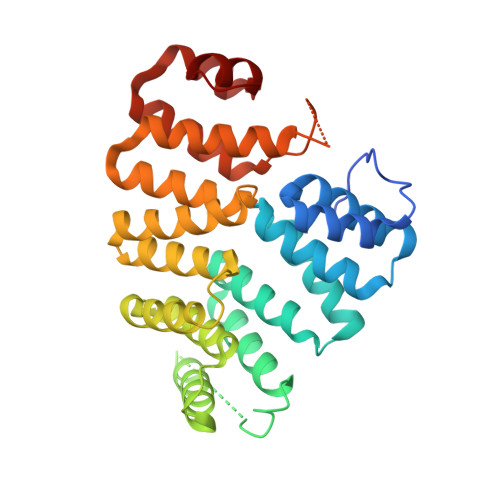Ligand-Induced Compaction of the PEX5 Receptor-Binding Cavity Impacts Protein Import Efficiency into Peroxisomes.
Fodor, K., Wolf, J., Reglinski, K., Passon, D.M., Lou, Y., Schliebs, W., Erdmann, R., Wilmanns, M.(2015) Traffic 16: 85-98
- PubMed: 25369882
- DOI: https://doi.org/10.1111/tra.12238
- Primary Citation of Related Structures:
4KXK, 4KYO - PubMed Abstract:
Peroxisomes entirely rely on the import of their proteome across the peroxisomal membrane. Recognition efficiencies of peroxisomal proteins vary by more than 1000-fold, but the molecular rationale behind their subsequent differential import and sorting has remained enigmatic. Using the protein cargo alanine-glyoxylate aminotransferase as a model, an unexpected increase from 34 to 80% in peroxisomal import efficiency of a single-residue mutant has been discovered. By high-resolution structural analysis, we found that it is the recognition receptor PEX5 that adapts its conformation for high-affinity binding rather than the cargo protein signal motif as previously thought. During receptor recognition, the binding cavity of the receptor shrinks to one third of its original volume. This process is impeded in the wild-type protein cargo because of a bulky side chain within the recognition motif, which blocks contraction of the PEX5 binding cavity. Our data provide a new insight into direct protein import efficiency by removal rather than by addition of an apparent specific sequence signature that is generally applicable to peroxisomal matrix proteins and to other receptor recognition processes.
- Hamburg Unit, European Molecular Biology Laboratory Hamburg Unit, Hamburg, Germany.
Organizational Affiliation:




















